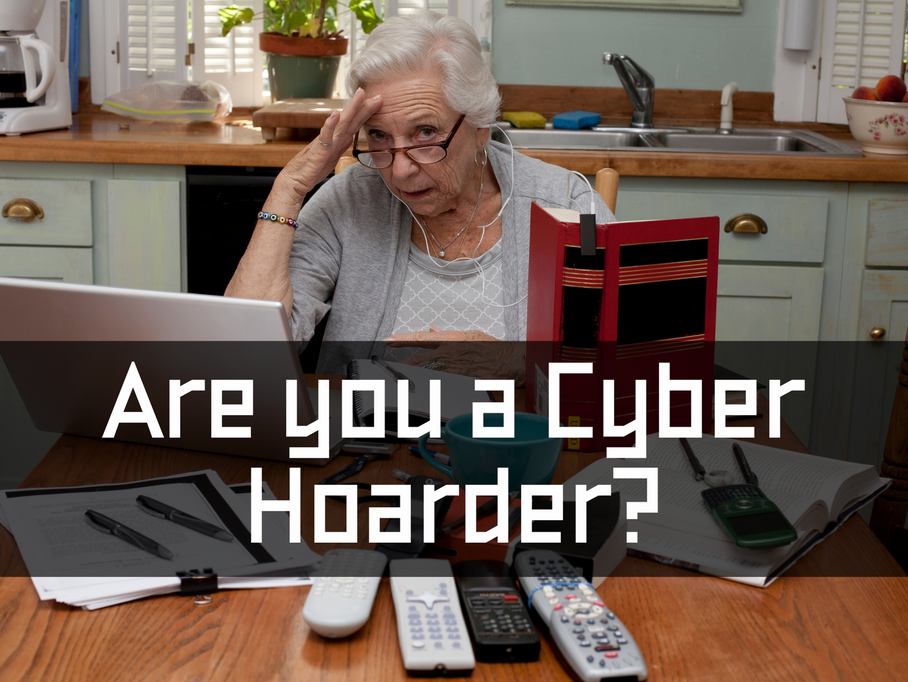What is Cyber Hoarding?
 Submitted by Dr. Ann Meyerson
Submitted by Dr. Ann Meyerson
Ann Meyerson Keyes Realty
During the past several months, I have experienced a rising number of consultations for assistance with hoarding. This involves helping isolated seniors who may need a combination of counseling, clean-up, and transition to a safer environment. However, a new type of hoarding has presented itself: “e-hoarding” or Cyber Hoarding.
Currently cyber hoarding is not recognized as a specific category in the latest edition of the Diagnostic and Statistical Manual of Mental Disorders 2013 (DSM-5). Clinical hoarding is attributed to individuals who excessively save items.
The idea of discarding them causes extreme stress. This obsessive-compulsive behavior can manifest as random, purposeful, severe or animal hoarding. The behavior patterns of e-hoarders can be very similar to those identified in the literature.

What is Cyber Hoarding?
Known as “E-Hoarding,” “Cyber Hoarding,” or “Data Hoarding”, this term refers to a behavior of accumulating thousands of irrelevant or non-useful digital materials. The expanding use of computers and media content combined with virtually limitless digital storage capacities offers a limitless source of electronic material that can be accumulated by individuals with hoarding tendencies.
Data accumulation could even be unintentional – resulting from a lengthy period of “digital neglect.”
Eventually, this behavior leads to disorganization, stress, heightened security risks and a reduction of productivity. Many cyber hoarders are suffering from cognitive and emotional stress in both their everyday lives and in their work environment.
In the past, excessive computer storage has been more prevalent in the general population. However, as more seniors are now computer savvy, they are also exhibiting these tendencies.
What can be done?
The best response to all this data overflow is to develop a plan of action. Here are a few guidelines for addressing the issue:
- Discard, donate, or recycle out-of-date electronic devices
- Clean up email boxes, digital files, text messages and remove social media “strangers”
- Do not ignore cloud storage – are there files being synched and archived to the cloud?
- …and definitely delete the sunset snapshot taken 10 years ago that’s taking up your iPhone storage!
First determine areas where the problem exists. How many hundreds to thousands of emails are currently stored? How many outdated articles have been saved? Work conscientiously to create a plan of action. If it would be helpful, try asking a family member or friend to encourage you in your plans to become clutter-free.
Framework for Getting Started
This process will begin to make the discarding easier, while decreasing the user’s overall frustration level. My recommendation is to start by attacking unwanted communications daily. One possible goal is to limit your email or text inbox to a maximum of ten messages. With your remaining messages filed in storage or erased, you are a step closer to easing the mental strain caused by data accumulation.
Go cautiously in an organized fashion. For example, approach the abundance of emails in Junk and Trash before moving on to categories like “Important” or “Drafts.”
Moving Beyond Cyber Hoarding
This discussion is intended to encourage individuals or their support teams to move beyond the cyber clutter. If the “Self-Help” approach does not produce the desired results, then professional psychological intervention may be necessary.
There are also a growing number of techies who specialize in computer data cleanup.
With the right support, some of the underlying reasons for the hoarding can be identified and addressed, assisting those with hoarding tendencies to live more meaningful, productive, and stress-free lives.
 Submitted by Dr. Ann Meyerson
Submitted by Dr. Ann Meyerson
Ann Meyerson Keyes Realty
Visit Dr. Ann Meyerson on Dementia Map or on her website.

